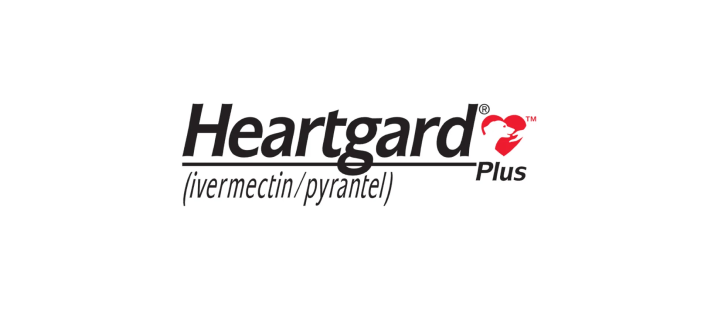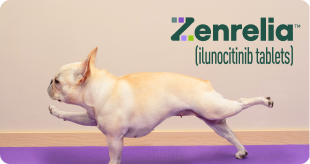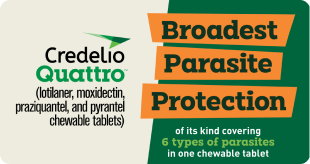Theophylline ER
Prescription required.
You already have a

subscription.
You already have a

subscription in cart.
Prescription required.
You already have a

subscription.
You already have a

subscription in cart.


What is Theophylline ER?
Theophylline ER (Extended-release) is a bronchodilator used to open air passages in the lungs. It relaxes muscles in the lungs and chest. Theophylline is used in the treatment of heart failure, asthma, bronchitis, and pulmonary edema. Theophylline ER may also be used for purposes other than those listed here. Theophylline ER is sold per tablet and requires a prescription from your veterinarian.
For:
Cats and Dogs
Benefits:
- Used to treat heart failure, asthma, bronchitis, and pulmonary edema
- Easy to administer
- Sold per tablet
How does Theophylline ER work?
Theophylline ER opens air passages in the lungs by relaxing muscles in the lungs and chest.
Cautions:
The medication is best given on an empty stomach. Theophylline should not be given to pregnant or nursing animals. Theophylline ER tablets are scored and may be broken in half. These tablets should not be chewed or crushed.
Brand Name:
Theolair (UCB Pharma), Theo-Dur (Key), Uniphyl (Purdue Pharma)
Generic Name:
Theophylline ER
What is the most important thing I should know about Theophylline ER?
Always check the medicine when it is refilled to make sure you are getting the correct brand and type as prescribed by your veterinarian. Ask the pharmacist if you have any questions about the medication you received from the pharmacy. There are many medications that can interact with theophylline. Tell your veterinarian about all the prescription and over the counter medications you give your pet. These include vitamins, minerals, herbal products, and medications prescribed by other veterinarians. Theophylline ER is not FDA approved for use in veterinary medicine; however, it is a commonly accepted practice for veterinarians to use this medication in dogs and cats. Theophylline is available by prescription in 100 mg, 200 mg, 300 mg, and 400 mg, Extended Release (ER), tablets. The usual dose in dogs is 4.5 to 6.8 mg/lb every 12 hours. The usual dose in cats is 2 mg/lb every 8 to 12 hours.
What should I discuss with my veterinarian before giving Theophylline ER?
Tell your veterinarian if your pet is allergic to theophylline, or if your pet has stomach ulcers; epilepsy; heart rhythm problems; congestive heart failure; fluid in the lungs; hypothyroid; fever; liver, or kidney disease. Tell your veterinarian if your pet is pregnant or lactating, or if you plan on breeding your pet.
How should Theophylline ER be given?
Give theophylline exactly as directed by your veterinarian. Do not give the medication in larger amounts, or for a longer period of time than recommended by your veterinarian. Follow the directions on the prescription label. Allow plenty of water for the pet to drink. Theophylline ER tablets should not be crushed, chewed, or broken unless the veterinarian tells you to. The tablet should be swallowed whole so that the medication is released slowly. Breaking the tablet may cause too much of the medication to be released at one time. Store Theophylline ER at room temperature, away from moisture, heat, and light.
What are the potential side effects of Theophylline ER?
If any of the following serious side effects occur, stop giving Theophylline ER and seek emergency veterinary medical attention: an allergic reaction such as difficulty breathing, swelling of the lips, tongue, face, or hives. Stop giving theophylline and call your veterinarian at once if any of the following side effects occur: seizures, severe nausea and vomiting, and restlessness, coughing up blood or vomit that looks like coffee grounds, urinating more than normal. Other less serious side effects may also occur. Talk to your veterinarian if your pet experiences mild nausea, loss of appetite, weight loss, restlessness, insomnia, headache, or dizziness. Side effects other than those listed here may also occur. Talk to your veterinarian about any side effect that seems unusual or that is especially bothersome to your pet.
What happens if I miss giving a dose of Theophylline ER?
Give the missed dose as soon as you remember. If it is almost time for your next dose, skip the dose that was missed and give only the next regularly scheduled dose, as directed. Do not give a double dose of this medication unless otherwise directed by your veterinarian.
What happens if I overdose my pet on Theophylline ER?
Call your veterinarian or veterinary emergency room. Symptoms of overdose may include nausea, vomiting, insomnia, tremors, restlessness, uneven heartbeats, and seizures.
What should I avoid while giving Theophylline ER?
Do not give this medication if your pet has severe heart disease, liver or kidney disease, hyperthyroid disease, high blood pressure, or stomach ulcers.
What other drugs will affect Theophylline ER?
Tell your veterinarian if your pet is using cimetidine (Tagamet), erythromycin (E-Mycin, Ery-Tab), or propranolol (Inderal). Drugs other than those listed here may also interact with theophylline. Talk to your veterinarian or pharmacist before giving any prescription or over the counter medications including vitamins, minerals and herbal supplements.


Theophylline ER Directions:
- Theophylline ER (Extended-release) is a prescription bronchodilator which is used to open air passages in the lungs in dogs and cats. By relaxing the smooth muscle of the lung it makes it easier for the pet to breathe.
- Theophylline ER is not FDA approved for use in veterinary medicine; however, it is a commonly accepted practice for veterinarians to prescribe this medication for dogs and cats.
- Theophylline ER is used in the treatment of heart failure, pulmonary edema, bronchial asthma, and chronic obstructive pulmonary disease.
Theophylline ER tablets should not be crushed, chewed, or broken unless told to do so by your veterinarian. The tablet should be swallowed whole so that the medication is released slowly. Breaking the tablet may cause too much of the medication to be released at one time. Give theophylline on an empty stomach, 1 hour before or 2 hours after a meal.
Theophylline ER Dosage:
| Weight | Dosage |
|---|---|
| All weights | The usual dose for cats is 2 mg/lb of pet's body weight by mouth every 8-12 hours. Allow plenty of water for your pet to drink |
| Weight | Dosage |
|---|---|
| All weights | The usual dose for dogs is 4.5 to 6.8 mg/lb of pet's body weight by mouth every 12 hours. Allow plenty of water for your pet to drink |
| Horses | Do not use! |
|---|
Storage:
Store Theophylline ER at room temperature away from moisture, heat and light.


Theophylline ER Ingredients:
| Active Ingredient (per tablet) | Amount |
|---|---|
| Anhydrous Theophylline | 100 mg |
| Active Ingredient (per tablet) | Amount |
|---|---|
| Anhydrous Theophylline | 200 mg |
| Active Ingredient (per tablet) | Amount |
|---|---|
| Anhydrous Theophylline | 300 mg |
| Active Ingredient (per tablet) | Amount |
|---|---|
| Anhydrous Theophylline | 400 mg |


 Swipe
Swipe











































